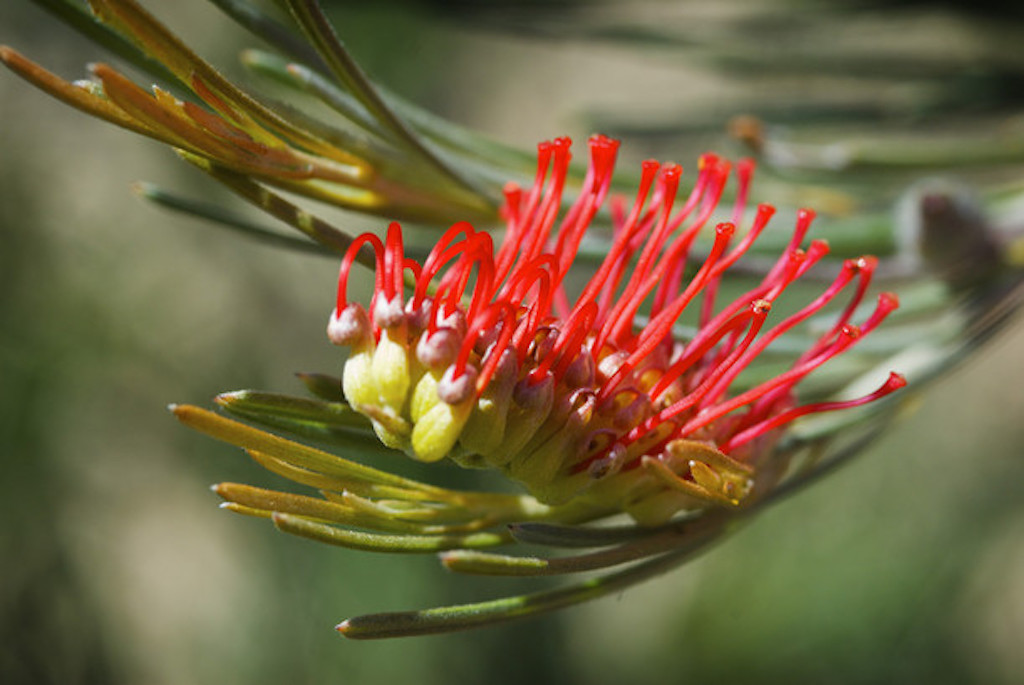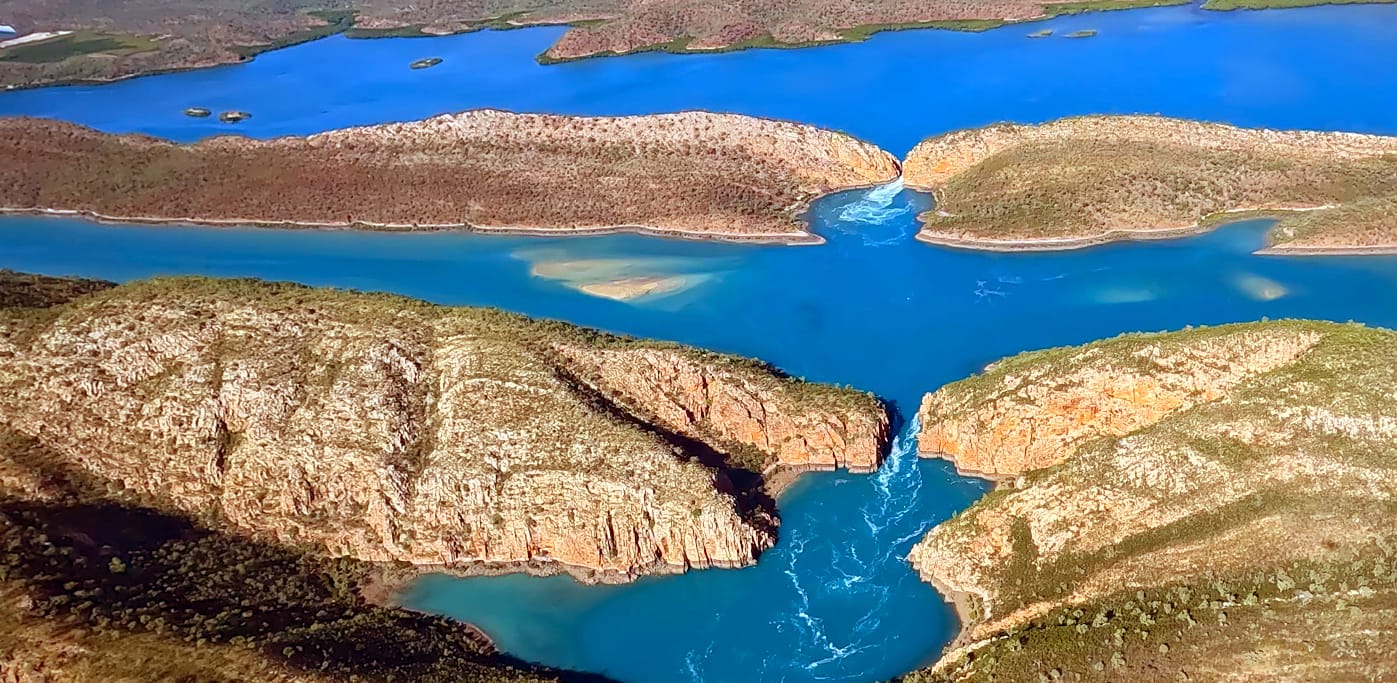ONE of the world’s great natural wonders awaits, the largest floral show on earth. Western Australia’s wildflower collection is the world’s largest with more than 12,000 species and 60 per cent found nowhere else.
“They colour the landscapes from coast to forest and city to outback,” say our tourism tsars.
The six-month flowering season begins in the north in June and July on the vast outback plains of the Pilbara, Goldfields and Coral Coast where vibrant blooms contrast with pindan earth, rugged canyons and turquoise sea.
By September, it has moved south and reached Perth’s botanical gardens, nature reserves and national parks, finishing with a flurry in October and November throughout the forests and coastal heaths of the south west.
The tourism people have got it right but where to start in our enormous state? When? How?
The best part is that seeing the wonders of our wildflowers is as easy as a short, city bus ride. Or enjoying a long, leisurely country trek covering thousands of kilometres. And over a six-month time-frame.
Consider a coach tour, a train trip (using your concession), flight or self-drive or hire 4WD.

Wildflowers within striking distance of Perth
The diversity of WA plants from the Kimberley to the Great Southern can be seen at the WA Botanic Garden in King’s Park, the world’s largest inner-city park.
From November to August visitors can hear stories of people and plants in 90 minutes. In July-October there’s a two hour water views and wilderness tour, exploring unique flora at Roe Gardens and Kings Park bushland.
From August to October a 90-minute nature trail goes through King’s Park bushland and wildflowers and in July to October explore hidden paths for a three hours walk to discover how plants survive in a challenging environment.
Look too for Gija Jumulu, a 750-year-old boab tree. The guided walks are free. See www.bgpa.wa.gov.au or phone 9480 3624.
In spring some of the best and most extensive displays of native wildflowers can be seen in Wireless Hill Park. This 40-hectare park is in suburban Ardross, the location of the former Applecross Wireless Station, and is ideal for a day visit.
With Banksia and eucalypt woodlands as well as shrub lands, the park has fabulous displays of red and green kangaroo paw (otherwise known as Anigozanthos manglesi) and many species of orchid including donkey orchids, spider and cowlsip orchids, sun orchids and rattlebeak orchids.
See: www.friendsofwirelesshill.org/wildflowers.html for more information.
Country wildflower hotspots
Best of the West self-drive tour links Perth with the Northern Goldfields via Geraldton, Sandstone, Leonora and Lake Ballard. It returns via Kalgoorlie, Esperance and through the south-west.
From August to October, coaches from Great Western Coach Tours take tourists on a full-day tour of the Swan Coastal Plain and Darling Escarpment. As well as red and green kangaroo paw, there are feathery verticordias, vivid pink isopogons, purple fringe lilies and orchids.
In the Pilbara, July-September, vibrant floral shades contrast with the red earth and golden spinifex. Along rivers, creeks and lakes you can see river red gums, coolabah, silver cadjeput and desert bloodwood trees. Gorges come to life with flowering rock fig and rock kurrajongs. In season, carpets of wildflowers of all sizes, shapes and colours like mulla mulla, Ashburton pea and 65 species of acacia or wattle can be seen.
From July to October carpets of everlastings reach into the distance in the Golden Outback, as far as the eye can see and busloads of people are attracted to wreath flowers north of Pindar.
The Winery, Woodlands and Wheatbelt trail begins in Perth and heads to Narrogin via Wandering and Wickepin and extends to Wagin, Arthur River and Williams.
Wildflower Country tour goes from Perth to Dalwallinu, Morawa, Geraldton and back to Perth via the Midlands route.
The Wheatbelt Way extends from Perth to Wyalkatchem, Beringbooding and Mukinbudin featuring Kunzea pulchella in both red and white varieties as well as native orchids and everlastings abound.
The Wheatbelt also features Hakea, Grevillea, Lechenaultia, wreath flowers and orchids from July to November. Visit Dalwallinu to see a vast array of wildflowers including wreath Lechenaultia. Perenjori, 355 kms north of Perth, is in the heart of wildflower country and is known for its wide variety of rare native spring orchids.
Follow the new Public Silo Trail showing murals by local and international artists on grain silos, public walls and transformer boxes. The trail runs from Perth to Northam, Merredin, Hyden, Ravensthorpe, Hopetoun, Katanning and Albany.
The Gascoyne-Murchison is known for carpets of everlastings from mid-July to mid-September. (Gascoyne Junction is 1,069 kms from Perth, Meekatharra is 764 kms).
Narrogin offers access to Dryandra Woodland, a nature conservation area with one of the largest remnants of original vegetation. In spring there are district wildflowers including orchids.
The Durokoppin Reserve on the Kellerberrin/Bencubbin Road is a 1,500-acre reserve of woodland, heath and mallee and supports a wide variety of flora. See tea trees, wattle and Grevillea.
Further south
More than half of WA’s 12,000 plant species grow in the south-west, some found nowhere else. It is is home to some of the rarest orchids and carnivorous plants, trees and mountain bells.
Spring, August-December, is the main flowering period but there is something in flower every month.
The Flower and Garden Festival is held at Nannup each August. when tulips are in full bloom.
Northcliffe district has bounced back from its 2015 bushfires. Rising from the ashes are wildflowers including orchids and fungi. The Blooming Wild festival runs from September to November.
In the southern forests and valleys are 3,000 species of flora, old growth forest of karri, jarrah, marri and tingle. There are 194 species of orchids and plenty of fungi, best seen from May to August, when the forests are cool and wet.
Country arboretums also provide international and native plant habitats.
Wildflower hot spots near Albany
Albany Windfarm – coastal heath, peppermint forest and Albany woollybush with colourful sprays of Hibbertia, Pimelia and Hakea.
Torndirrup National Park – colourful display of wildflowers in spring, including Albany woollybush, carnivorous Albany pitcher plant and the pungent sticky tailflower.
Also see Stony Hill Heritage Trail in Torndirrup National Park and Point Possession Heritage Trail – Vancouver Peninsula.
The southern section of The Bibbulmun Track, 1,003 kms Albany-Perth, is a must for wildflower watchers. Follow the Waugul (rainbow serpent) track markers.
On the Kalgan River take the Luke Pen River Walk for basket flower, purple flag, curry flower, devil’s pins and parrot bush.
In Mount Martin Regional Botanic Park the Mount Martin Walk Trail is good for white spider orchids and huge stands of grasstrees.
The Porongurup National Park has 750 plant species including 55 different species of orchid.
Stirling Range National Park, one of the world’s most important flora areas, has 1500 species, 82 found nowhere else. There are 123 orchid species in the park – over a third of all of WA orchids.
All regional areas have information offices and websites to point you in the right direction.





































